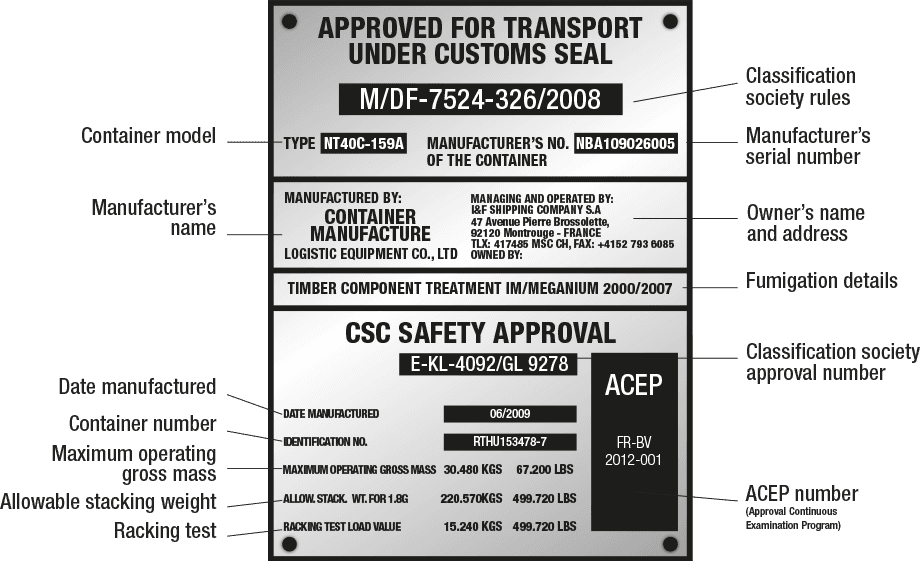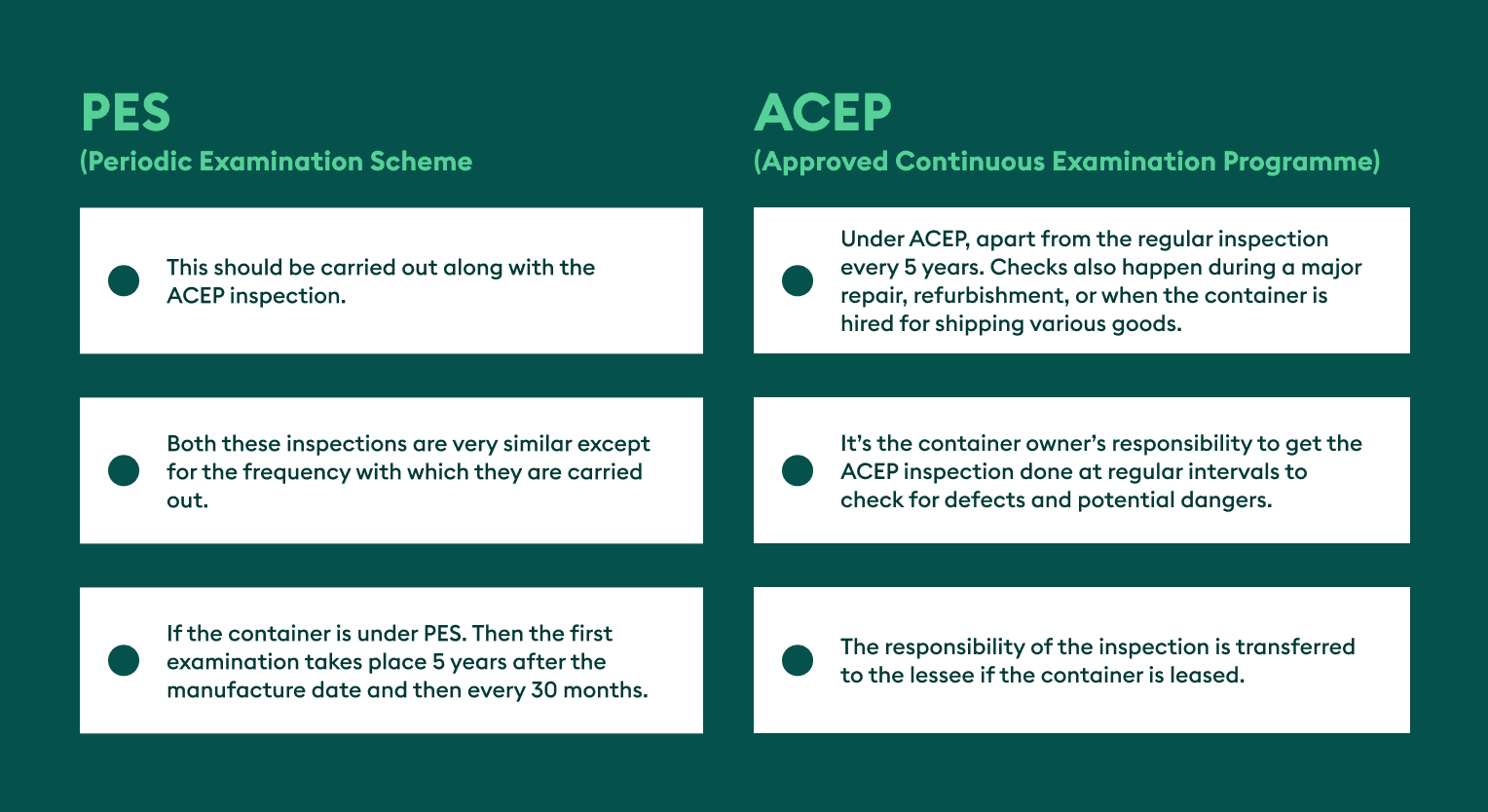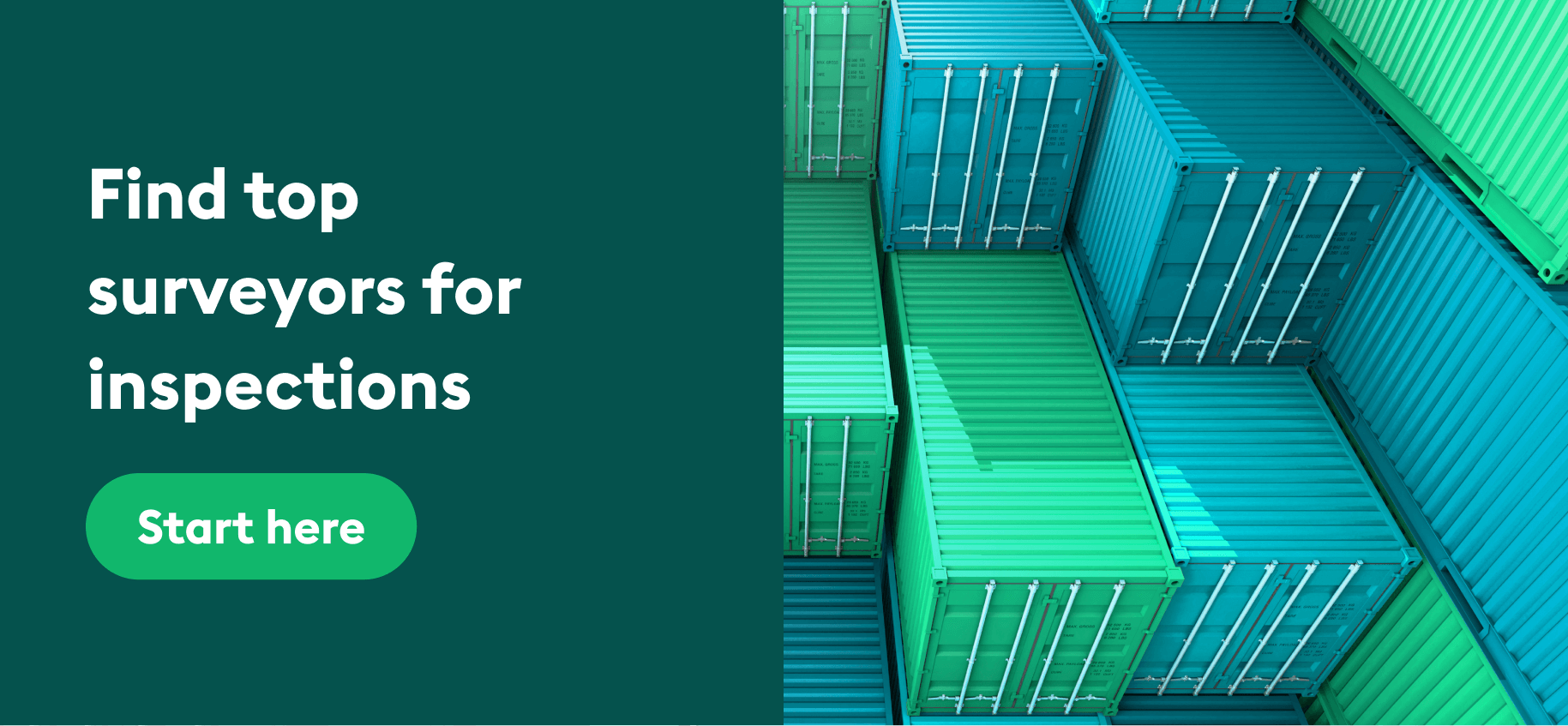Last updated: 11 October, 2023
Every container used for international transport needs a valid CSC plate to ensure good conditions for cargo. In this blog, we give you an overview of the CSC plate and help you get boxes at great deals. Plus, we also help you find top surveyors to survey your units on Container xChange.
To ensure the safety of containers, the IMO (International Maritime Organization) enforced the CSC (Convention for Safe Containers of 1972) to regularly inspect containers. This was done to ensure that containers were sturdy enough to carry cargo safely through transit. And to certify that the units were safe and not a danger to human handlers working with the boxes (no holes, leaks, for flammable and hazardous goods).
Without a valid CSC plate, your box will not be allowed to move cargo for international maritime transport.
Hence, it’s important for you to get an in-depth understanding of the CSC plate. And you can get all this information in the coming sections. But if you already know the importance of the CSC and are just here to get boxes at good deals, try our public search feature below.
All you have to do is choose “I want to use containers”, type in the pick-up and drop-off locations, and hit ‘search’. You’ll get a list of 50,000+ containers in 2,500+ locations worldwide sourced from 1,500+ vetted suppliers. The prices you’ll see will be stated upfront allowing you to compare and decide which one’s best for you. The rates are competitive and negotiable with zero hidden fees. Find top deals on boxes you won’t get on any of your other sourcing channels.
What is a CSC plate?
A CSC (Convention for Safe Containers) plate is a valid safety approval plate, that all shipping containers must have when they take part in international shipping. The CSC plate specifies that the box qualifies for specific examinations for minimum standards for capacity, container conditions, weight, resistance to shipping forces, and container types and dimensions and dimensions. The plate also provides proof of its authenticity according to CSC, as well as ISO (International Standards Organization) standards.
In order to receive valid CSC plates, shipping containers must undergo an official CSC survey. CSC surveys are conducted by certified third-party container surveyors.
A valid CSC plate is crucial for all intermodal shipping containers to have (be it SOC containers or COC units). Without this the boxes will not be able to move cargo for international maritime transport. Speaking of SOCs, if you need one for your business requirements you can find schedule a demo
What are the contents of the container CSC plate?
The contents of the container CSC plate are:
- Classification society rules: The country code that takes responsibility for ensuring that the boxes are CSC compliant.
- Container model: Helps to identify the container type and purpose.
- Manufacturer’s serial number: ID number allotted to the container by the manufacturer.
- Manufacturer’s name: The owner’s name and address are mentioned here.
- Fumigation details: This is to show that container floors have been treated with basileum, radaleum, or talileum-400.
- Classification society approval number: The ID number for the CSC approval process.
- Date Manufactured: Manufacturing date of the unit.
- Container number: This is the unique container number given to each box following the conditions laid down by the Classification Society rules.
- Maximum operating gross mass: Maximum weight of cargo the container can hold.
- Allowable stacking weight: This number specifies the extra weight (of another container) that can be stacked on top of the box during storage and transportation.
- Racking test: This indicates the amount of pressure or force that can be applied to the top edge of the box before the frame bends.
- ACEP number: Containers under an ACEP inspection scheme showcase the scheme number.

Infographic is a courtesy of the BIC – Bureau International des Containers
Understanding a CSC plate and its contents is very important when it comes to buying or leasing containers for transport, storage, or any other purposes. It’s the container owner’s responsibility to maintain a unit in good condition and to ensure that it’s inspected and has container survey report carried out at the appropriate intervals.
If you’re looking to schedule a demo
Shipping containers: CSC plate certification and validity
Speaking of inspections (aka container surveys), an inspection process includes testing, maintenance, and the inspection itself in accordance with CSC regulations, to get the CSC plate certified. It’s mandatory for manufactured containers to get an approval plate. Regulations state that containers have to be inspected at intervals appropriate to operating conditions. The standards that apply for safety examinations are those agreed upon between the administration of the contracting party and the container owner/operator. There are two container inspection schemes that can be applied for CSC plate inspections: ACEP and PES.
Along with the CSC survey mentioned at the beginning of the blog, you can also get the ACEP and PES inspections done for your boxes on schedule a demo
We will explore these two inspections in detail in the next section. But before we get there, here’s a little information about the validity of the CSC plate.
Now to make sure the CSC plate is valid; the plate must be bolted to the outside of the left door of your container. It’s also important to keep in mind that the CSC pate is valid only if your container is in good condition during the inspections. If there’s any container damage seen during the surveys, the box is not CSC certified or valid anymore for use and you must take action to get your box repaired immediately.
2 types of CSC plate inspections: ACEP and PES
Circling back to the two inspections here’s what you should know:
Periodic Examination Scheme (PES) and Approved Continuous Examination Scheme (ACEP) are both needed for CSC plate certifiability. The APEC scheme is more common in practice. But both examination schemes ensure that containers are maintained at the required level of safety and may, therefore, be considered as equal.
PES is the original approach that is currently generally used by small operators and requires the display of the “Next Examination Date” (NED) on the CSC plate. The first examination takes place less than 5 years and then at intervals of less than 30 months.
Containers operated under ACEP must be properly and regularly inspected as part of their regular operation and within the intervals required under PES. ACEP is currently used by most container owners and operators because of the following reasons:
- More consistent examinations due to established examination procedures.
- Better condition of containers in service. Because ACEP examinations are not triggered by a schedule. So minor damage will not accrue to the container during the 30 months between examinations compared to PES.
- No need for updating CSC plates.

Find surveyors for container inspections on Container xChange
If you want to get one of these inspections done for your box, you can get access to certified surveyors in 4000+ locations on the Container xChange platform. Here’s how:
- Become a member of our platform.
- Lease a box at competitive, comparable, and negotiable rates with zero hidden fees. Thanks to our market price transparency. And get your boxes from only certified members.
- After securing your box, book an inspection by simply clicking on the ‘Request Survey’ button and connect with surveyors in different locations globally. Your containers will be inspected by our vast network of skilled surveyors for a reasonable fee.
It’s that easy! Your box and your inspection are secured within minutes on Container xChange. Click on the banner below and let our expert team help get you started right away.

What is a CSC combined data plate?
The CSC combined plate is essentially the CSC plate which also includes information on other plates necessary for containers to be used in international trade. These plates are namely:
- The customs plate (Customs Convention for Containers or CCC) . This shows the container certificate that allows transport under customs seal.
- The timber treatment that’s applied to the wood flooring of the unit.
- The owner’s plate (this is optional). This carries the name of the container’s operator and its operational number (using the bank identifier code -BIC code).
Note: If you want to learn more terms related to CSC plates have a look at our glossary box below.
5 important shipping terms related to CSC plates you should know:
If you want to explore some more terms related to shipping check out Container xChange’s glossary page here. |
Get your box CSC plate certified with top surveyors on Container xChange
By now you’re well-equipped with information on the CSC plate and the combined plate too. And you know how important they are. So we suggest that you get your CSC survey and the two periodic inspections done at the earliest. And secure a valid CSC plate to protect human lives and your cargo.
How? Simply, by heading over to our marketplace and leasing your box at top deals. Then you can book an inspection at a small fee by simply clicking on the ‘Request Survey’ button. And connect with surveyors in 4000+ locations.
After that, you can even get your container insurance covered on our platform for extra safety against damage claim payments. Finally, when your box is ready to set sail with your cargo, you can even track its whereabouts in near real-time with our tracking feature. We’ve got it all covered for you.
So, what are you waiting for? Visit Container xChange to secure qualified surveyors at reasonable fees and get those inspections done periodically and do your part to safeguard your cargo and human life, by clicking the banner below.

What is a CSC plate?
A CSC (Convention for Safe Containers) plate is a valid safety approval plate, that all shipping containers must have when they take part in international shipping.
What is CSC inspection?
A CSC inspection process includes testing, maintenance, and the inspection itself in accordance with CSC regulations, to get the CSC plate certified. There are two container inspection schemes that can be applied for CSC plate inspections: ACEP and PES.
How do I get a CSC plate for a container?
In order to receive valid CSC plates, shipping containers must undergo an official CSC survey. CSC surveys are conducted by certified third-party container inspectors.
![What is a CSC plate? Get the definition [+find top surveyors]](/_next/image?url=%2Fblog%2Fcsc-plate-featured.jpg&w=1920&q=75)